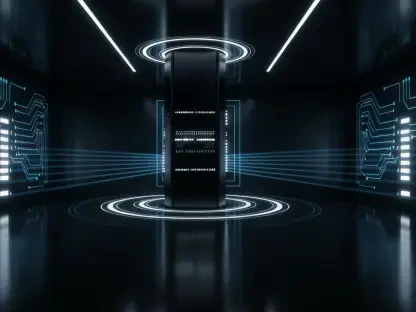I’m thrilled to sit down with Vijay Raina, a renowned expert in enterprise SaaS technology and software design. With his deep knowledge of cutting-edge tools and thought leadership in software architecture, Vijay offers invaluable insights into the evolving landscape of human-AI collaboration. Today, we’ll explore how businesses can prepare for AI integration, the transformative potential of hybrid intelligence, the challenges of adoption, and the critical role of leadership in driving AI strategies forward.
How do you define “human-AI readiness” in the context of today’s fast-changing workplace?
Human-AI readiness, to me, is about equipping both people and organizations to work seamlessly alongside AI technologies. It’s not just about having the right tools or infrastructure; it’s about fostering a mindset and skill set that allows employees to leverage AI as a partner. In today’s workplace, this means understanding how to interact with AI systems, ask the right questions, and interpret outputs to make informed decisions. It’s a cultural shift as much as a technological one, where trust and collaboration between humans and machines become second nature.
What steps can organizations take to prepare for a future where AI is woven into everyday operations?
Organizations need to start with a clear strategy that prioritizes both technology and people. First, they should invest in infrastructure that supports AI—think robust data systems and cloud platforms that can handle specialized models. But equally important is building AI literacy across the workforce. This means training programs that aren’t just for tech teams but for everyone, from marketing to sales. Companies also need to encourage experimentation, allowing employees to test AI tools in low-risk settings to build confidence. Finally, leadership must champion this transition, setting a vision that aligns AI with business goals.
How can AI enhance human creativity in a team setting, much like a brainstorming tool or innovation hub?
AI can act as a springboard for creativity by offering perspectives humans might not consider. Imagine a team brainstorming a marketing campaign—AI can generate dozens of tagline ideas, analyze consumer trends in real time, or even prototype visuals based on input. It’s like having an endless whiteboard that throws out suggestions and refines them based on feedback. This frees up team members to focus on the bigger picture, like emotional resonance or strategic direction, while AI handles the heavy lifting of data analysis or iterative tasks. I’ve seen teams use AI to simulate customer responses to ideas, which sparks deeper discussions and innovation.
What are some practical examples of routine tasks AI can take over to give employees more time for strategic work?
AI is fantastic at automating repetitive, time-consuming tasks. For instance, in a business setting, AI can manage scheduling, draft emails, or compile reports by pulling data from multiple sources. In customer service, it can handle initial inquiries through chatbots, escalating only complex issues to humans. Even in software development, AI can write boilerplate code or run diagnostics, letting developers focus on designing unique solutions. By offloading these mundane activities, employees can dedicate more energy to creative problem-solving and long-term planning.
What do you see as the biggest obstacles companies face when trying to roll out AI across their entire organization?
One of the biggest hurdles is the uneven level of AI literacy among employees. You’ve got some who are eager to dive in and others who shy away, either out of fear or lack of understanding. Then there’s the technology gap—many companies don’t have the right data systems or integration tools to make AI work smoothly across departments. Cultural resistance is another issue; if employees or even mid-level managers see AI as a threat rather than a tool, adoption stalls. Lastly, without strong leadership buy-in, AI initiatives often lack the resources or direction to scale effectively.
How can leadership foster a culture of innovation and experimentation with AI among their teams?
Leadership needs to lead by example. When CEOs and senior executives actively use and advocate for AI, it sends a powerful message. They can create safe spaces for experimentation by launching pilot programs where teams can test AI tools without the pressure of immediate results. Recognizing and celebrating early wins, even small ones, builds momentum. Leaders should also invest in training that’s tailored to different roles, ensuring everyone sees how AI applies to their work. Most importantly, they need to encourage a mindset of learning—mistakes are okay as long as they’re stepping stones to improvement.
Why is there such a noticeable gap in AI literacy among workers, and how can companies address it?
The gap often comes down to exposure and mindset. Some workers, especially in tech-heavy roles like IT or marketing, have had more opportunities to play with AI tools, while others in more traditional roles might not see the relevance. Generational differences play a part too—younger employees might be more comfortable with tech in general. Companies can bridge this gap by making AI training mandatory and accessible, using hands-on workshops or gamified learning to make it engaging. Pairing AI-fluent employees with novices for peer learning can also help. The goal is to demystify AI and show its value in everyday tasks.
What role do you think generational differences play in how employees approach AI tools at work?
Generational differences can be significant. Younger workers, often digital natives, tend to be more open to adopting AI tools—they’ve grown up with tech and see it as a natural extension of their workflow. Older employees might be more cautious, sometimes due to unfamiliarity or past experiences with tech rollouts that didn’t deliver. That said, it’s not a hard rule; I’ve seen plenty of seasoned professionals embrace AI when they see tangible benefits. Companies need to tailor their training and communication to address these varied comfort levels, focusing on practical outcomes rather than just the tech itself.
Why is it so vital for top executives, like CEOs, to back AI strategies wholeheartedly?
Without executive support, AI initiatives often fizzle out. CEOs and senior leaders set the tone for the entire organization—if they’re not on board, it’s hard to secure budget, align priorities, or drive cultural change. Their endorsement signals that AI isn’t just a side project but a core part of the business strategy. They also have the influence to break down silos and ensure cross-departmental collaboration, which is critical for enterprise-wide AI adoption. When leaders champion AI, it cascades down, motivating teams to engage and innovate.
What is your forecast for the future of human-AI collaboration in the workplace over the next decade?
I believe we’re heading toward a workplace where human-AI collaboration is as natural as working with a colleague. Over the next decade, AI will become even more personalized and adaptive, learning individual work styles and preferences to offer tailored support. We’ll see roles evolve, with a stronger focus on strategic and creative tasks as AI handles more operational duties. The challenge will be ensuring equitable access to AI tools and training so no one gets left behind. Ultimately, I think the companies that thrive will be those that master this partnership, unlocking levels of productivity and innovation we can’t yet fully imagine.









